Auctions
Christie’s Kicks Off Auction Gigaweek With Record-Shattering $57 Million Brancusi
A 1913 Brancusi carried the house's Impressionist and Modern sale over its presale estimate of more than $200 million.
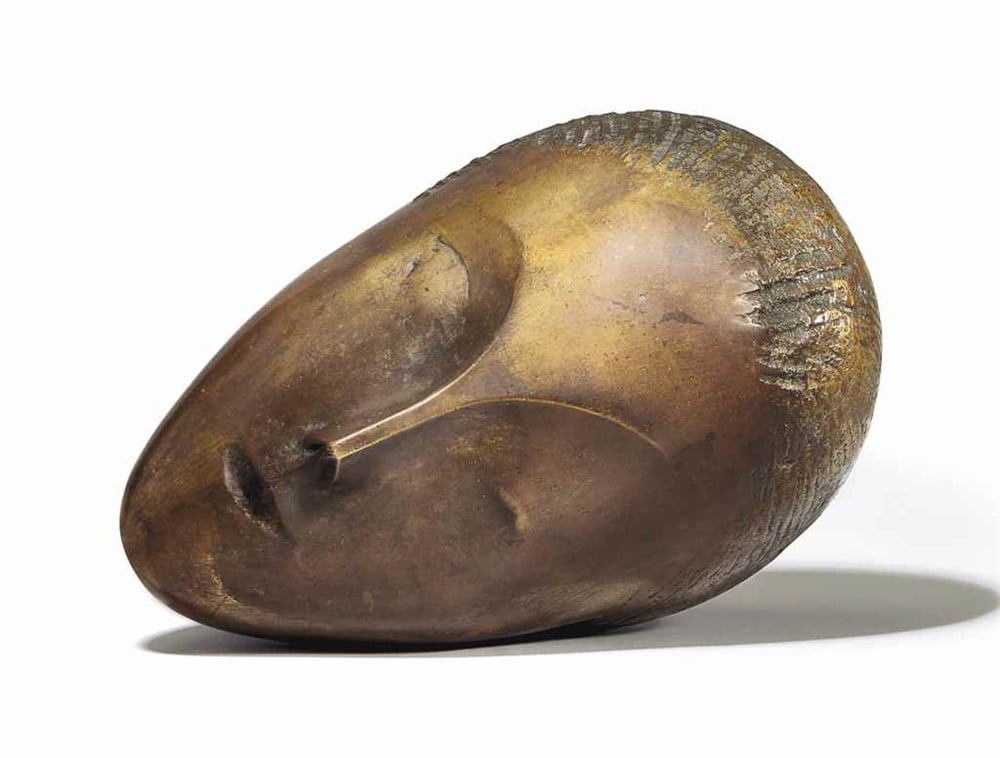
A 1913 Brancusi carried the house's Impressionist and Modern sale over its presale estimate of more than $200 million.

Eileen Kinsella

Christie’s launched a jam-packed spring auction week—which sees five evening sales of Impressionist, Modern, and contemporary art stuffed into just four days—with a solid, if not frenzied, evening sale that totaled $289.2 million. The results exceeded pre-sale expectations “in excess of $200 million” and surpassed the $141.5 million total generated by Christie’s Impressionist and Modern sale in May 2016. Of the 53 lots on offer, 43—or 78 percent—were sold.
The star lot of the sale, by far, was Constantin Brancusi’s La muse endormie (1913), a patinated bronze with gold leaf that had been cast by 1913. The artist carved the original marble version in 1909–1910. The bronze, which was estimated at $20–30 million, sold for $57.4 million with premium, shattering the previous $37.3 million auction record for the artist that had been set at the Christie’s Yves Saint Laurent sale in 2009. (Final sales prices reported by the auction house include the house’s premium; presale estimates do not.) The bronze had been in the same private French collection for nearly 60 years.
Auctioneer Andreas Rumbler opened bidding for the Brancusi at $18 million, just below the low end of the estimate, and immediately sparked a flurry of aggressive bidding. After new bidders jumped in at increasingly high price points, three individuals—including two in the room—chased the work past the $40 million mark.
The sculpture finally hammered down for $51 million to advisor and former Sotheby’s contemporary head Tobias Meyer, who was seated near the front of the room with his cell phone to his ear. Meyer had waited until bidding hit $34 million before he entered the race.
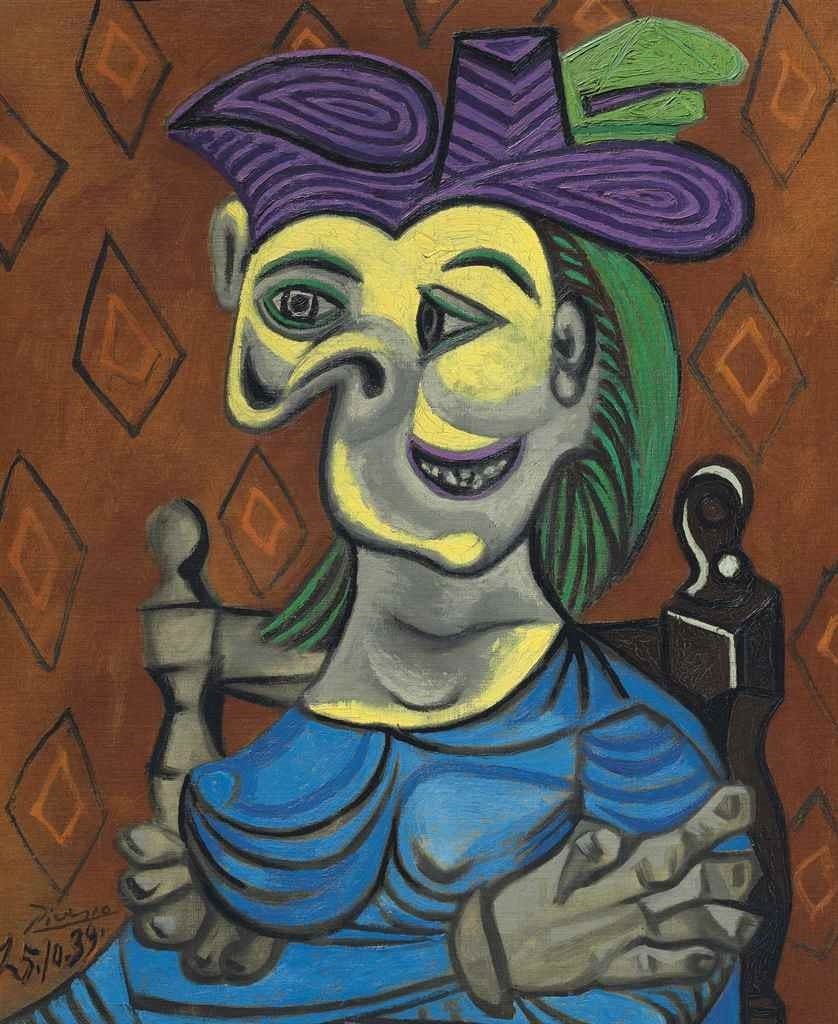
Pablo Picasso, Femme assise, robe bleue (1939). Courtesy Christie’s Images Ltd.
The bidding for the evening’s second-highest lot, this portrait of Picasso’s lover Dora Maar, Femme assise, robe bleue (1939), was far shorter and more decisive. The action opened at $35 million and quickly became a two-way bidding war between Christie’s contemporary art chairman of Europe, Francis Outred, and Rebecca Wei, president of Christie’s Asia. Wei won the work for her client with a hammer price of $40 million. (The final price was just over $45 million with premium.)
The painting has an incredible backstory that is closely intertwined with European history and which undoubtedly helped boost the price. Shortly after Picasso painted it, the work was taken by the Nazis from its original owner, Picasso’s Jewish French art dealer Paul Rosenberg. Toward the end of the war, the picture was due to be transported to Germany, but was traced, intercepted, and successfully captured by French soldiers, who had made it a priority to preserve French culture.
The work’s last appearance at auction was June 2011, when Christie’s offered it for sale in London with an estimate of £4–8 million ($6.5–13 million), and sold it for just under £18 million ($29 million). Tonight’s presale estimate was a lofty $35–50 million—nearly six times the low estimate it carried just six years ago. The premium-inclusive price represents a hefty 55 percent increase.
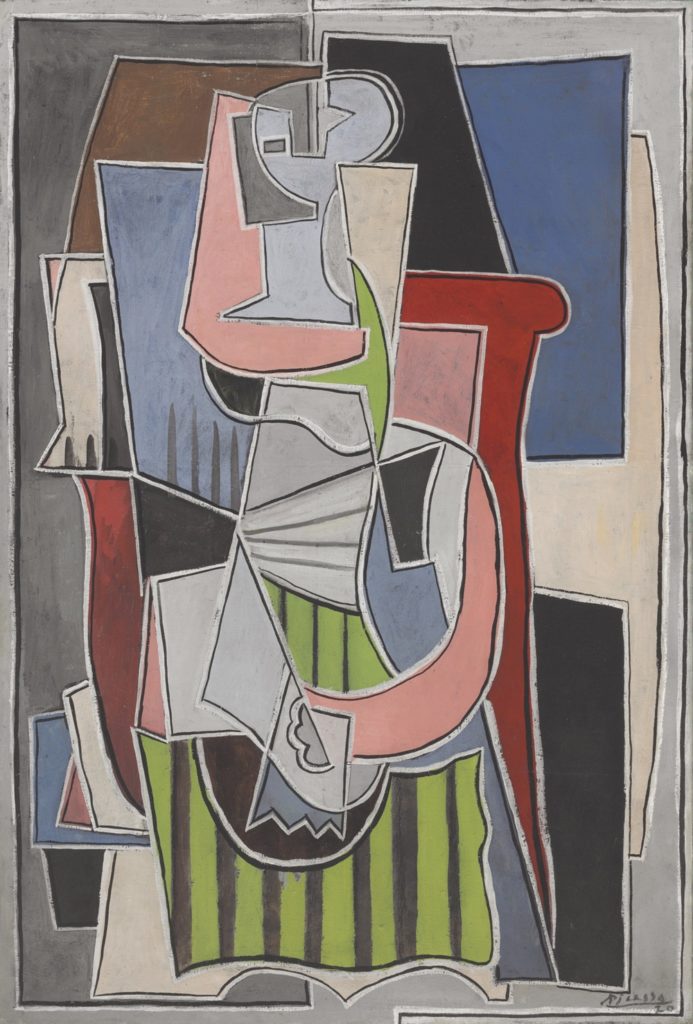
Pablo Picasso, Femme assise dans un fauteuil (1917-20). Courtesy Christie’s Images Ltd.
Another Picasso was also among the priciest lots of the night. Femme assise dans un fauteuil (1917-20) was painted over three years in Montrouge and Paris, according to Christie’s catalogue.
The work, which had an estimate of $20–30 million, sold for $30.5 million. It reflects Picasso’s experimentation in the years following World War I, when he moved between a neoclassical and a Cubist approach. According to Picasso’s biographer John Richardson, the artist began this portrait of his first wife, the dancer Olga Khokhlova, after their first Christmas together in 1917, to celebrate their recent engagement. When it was last offered at auction at Christie’s London in April 1989, it sold for £4.4 million to Richard Gray Gallery.
The painting was one of eight artworks consigned by Sydell Miller, the co-founder of Matrix Essentials; the proceeds will benefit the Cleveland Clinic Heart & Vascular Institute.
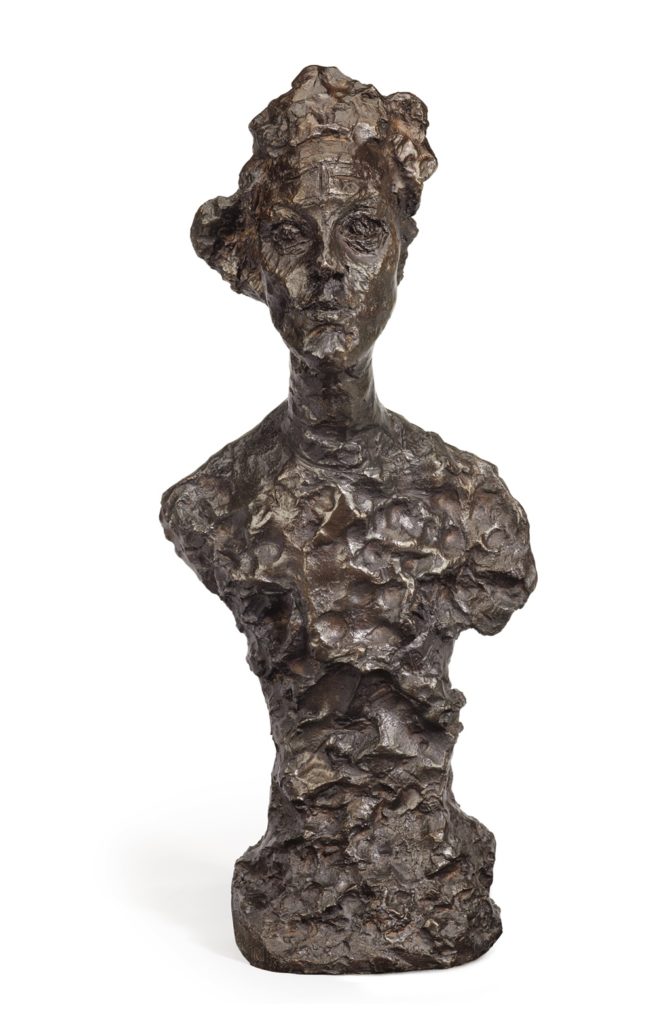
Alberto Giacometti, Buste d’Annette VI (conceived in 1962 and cast in 1964). Courtesy Christie’s Images Ltd.
The sale was uncharacteristically heavy on sculpture, with 12 works in total, including several pieces by Henry Moore, Auguste Rodin, Marino Marini, Alberto Giacometti, and Edgar Degas. All told, 10 of the 12 sculptures found buyers.
The highest estimated of these was Moore’s Large Four Piece Reclining Figure (conceived and cast in 1972–1973), which sold for $8.2 million with premium. (Without premium, it fetched $7.1 million—squarely within the presale estimate of $6–8 million.) Surprisingly, the winning bid was placed not by an established Impressionist and Modern specialist but by Loic Gouzer, Christie’s recently promoted co-chairman of postwar and contemporary art in the Americas.
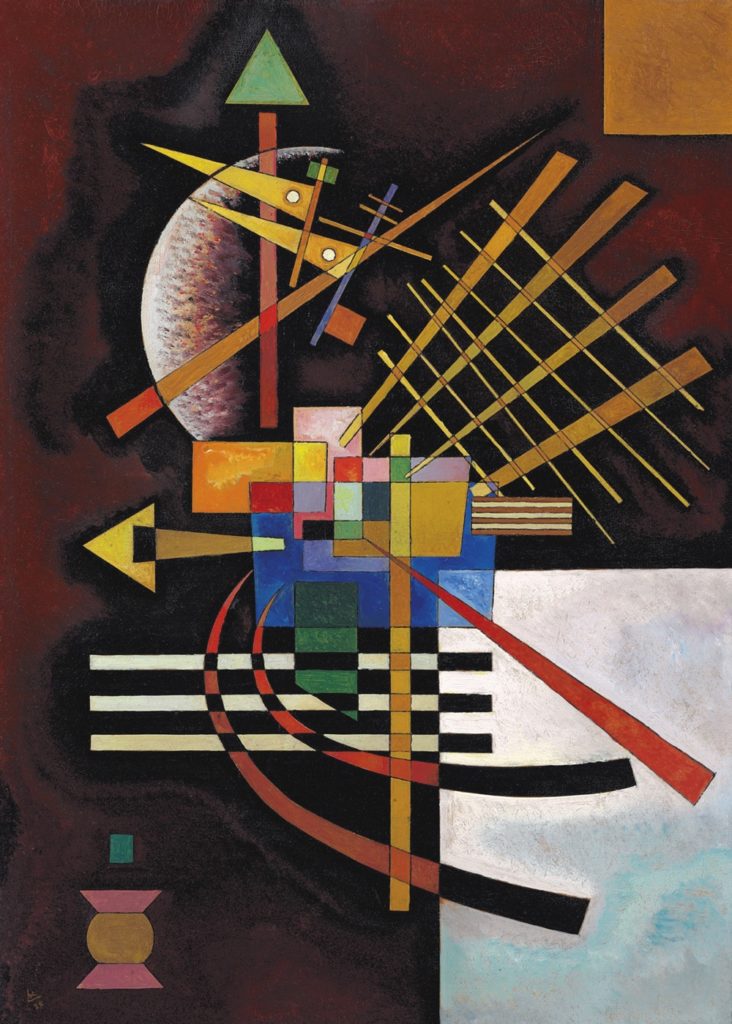
Wassily Kandinsky, Oben und links (1925). Courtesy Christie’s Images Ltd.
By comparison, bidding was decidedly more robust and competitive for Wassily Kandinsky’s Oben und links (1925), which had previously been owned by both the Gugggenheim Museum and the Fort Worth Art Museum, according to the catalogue. Bidding opened at $3.2 million, and the work sold for $7.2 million after a blow-by-blow bidding war between two clients (presale estimate: $5–7 million).
As always, some lots making a return trip to the auction block can serve as a helpful benchmark to gauge the market for a particular series, period, or artist. Joan Miró’s Femmes et oiseaux dans la nuit (1946) was estimated at $3–5 million and sold for $4.8 million. When it was previously offered for sale at Christie’s New York in November 2000, it sold below estimate for $1.65 million (est. $1.8–2.5. million). Prior to that, it sold at Sotheby’s in 1993 for $442,500 on an estimate of $400,000 to $500,000.